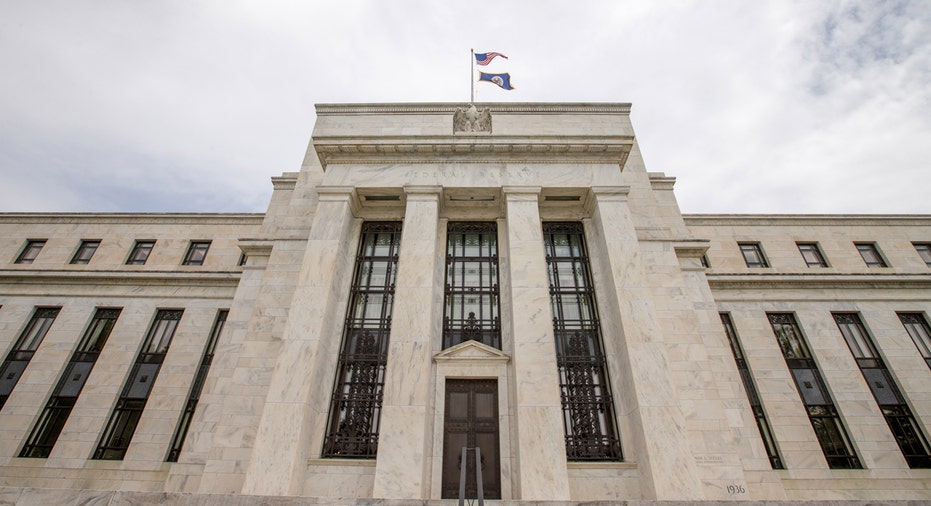Economist Conviction on Two Rate Hikes This Year Fading

The U.S. Federal Reserve will raise interest rates twice this year, most likely in June, but the probability has faded on signs of a weak start to the year, inflation that is still tame and a brittle global backdrop, a Reuters poll showed.
The Fed is likely to take a pass at its policy meeting later in April and instead will opt to raise the federal funds rate by 25 basis points in June to 0.50-0.75 percent in what will be the second in its first series of rate rises in nearly a decade.
The central bank is still expected to follow up with another rate rise before year-end, taking the federal funds rate to 0.75-1.0 percent. But confidence among economists for two rate hikes this year, as the Fed has suggested it will do, is fading.
A growing minority of economists in the regular monthly survey, about a quarter, predict just one rate hike this year, up from 15 percent in a poll taken just one month ago.
Fed Chair Janet Yellen has made it clear she is in no hurry to raise, which has halted a dollar rally in its tracks and sent it sliding against a basket of currencies, such as the euro and the Japanese yen.
Two-thirds of economists, 54 of 81, forecast a rate hike by end-June, with respondents providing a median 55 percent probability of that happening, down from 60 percent in March.
"It is certainly an uphill climb to get to a June rate hike," said Sam Bullard, senior economist at Wells Fargo. "A lot of things do have to go right between now and then."
Fed funds futures, as well as the outlook for U.S. 10-year Treasury yields, also show little conviction in markets about a series of Fed hikes this year. [US/INT]
One thing that is going right for the Fed is the U.S. job market. The economy has created 200,000 or more jobs in all but three of the past 12 months, including 215,000 in March.
"The labor market is operating fairly normally and shows every indication that it will continue to do so with steadily rising payrolls and reductions in slack," said Terry Sheehan, senior analyst at Stone McCarthy Research Associates, adding this was a good reason for the Fed to tighten more.
Indeed, the number of people seeking unemployment benefits in the U.S. unexpectedly fell last week, matching the level in early March, which was the lowest since 1973.
What hasn't yet happened is a significant pickup in wages and consumer inflation. In March, inflation cooled to 0.9 percent compared to a year ago from 1.0 percent in February.
Core PCE price inflation, the Fed's preferred inflation gauge, is not forecast to rise to near 2 percent until the end of next year. reuters://realtime/verb=Open/url=cpurl://apps.cp./Apps/econ-polls?RIC=USPCEAP
TROUBLE AGAIN IN Q1
While concerns abound about the world backdrop, particularly China, forecasters gave just a 15 percent median probability of a U.S. recession, unchanged from last month. The trouble is, growth has been uneven, particularly at the start of each year.
This year is no exception.
The U.S. economy almost stalled in January-March, according to the latest real-time forecast from the Federal Reserve Bank of Atlanta. Economists in the Reuters poll were more optimistic, expecting 1.2 percent annualized growth.
But that is down sharply from the 2.0 percent forecast just a few months ago, an unusually large change in such a short period of time.
An analysis of the past five years of Reuters poll data on U.S. Q1 GDP shows even that view is probably too optimistic.
Growth in the first quarter has routinely fallen short of expectations - several times because of heavy snowfall and this year due to a bigger-than-expected run-down in inventories.
Economists have been consistently downgrading their growth forecasts for 2016 since last year. They expect the U.S. economy to expand 2.0 percent this year, down from 2.1 percent in last month's survey.
The International Monetary Fund this week cut its U.S. growth forecasts once again and now expect an expansion of 2.4 percent this year from 2.6 percent predicted earlier.
"We see the economy shifting down in the second half the year... softening consumer spending and lack of wage growth are key hurdles for the Fed to hike rates," said Thomas Costerg, senior economist at Standard Chartered Bank, who is expecting one rate cut by the end of the year.
(Polling by Sarmista Sen and Kailash Bathija; Editing by Ross Finley and Raissa Kasolowsky)



















